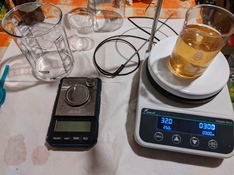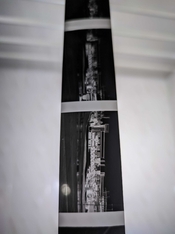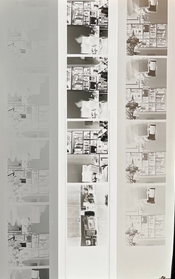Hello,
I've been wanting to play with the H&W Control developer for a while now. I have the following formula:
Expectedly, even so the resulting concentrate would have a short life. Since my tests will take time, I would like to make a more stable concentrate. I understand that glycerin is a good solvent for some ingredients such as carbonate, borax and an unknown amount of sulfite. Also, glycerin has a close to neutral pH, mixing well with glycol.
Can I make a mix of glycerin and glycol to dissolve everything in? The unknown for me is in the sulfite - I can't find anywhere what its limit value for dissolution is. Also, will the glycerin protect against oxidation like the glycol or will it make the whole thing pointless?
I've been wanting to play with the H&W Control developer for a while now. I have the following formula:
Solution A:
Water - 50.00 ml
Sodium sulfite - 1.00 g
Hydroquinone - 0.16 g
Sodium carbonate - 4.60 g
Phenidone - 1.10 g
Solution B
Water - 50.00 ml
Sodium sulfite - 8.00 g
Add solution A to solution B, then add water to make 132 ml of concentrate.
Expectedly, even so the resulting concentrate would have a short life. Since my tests will take time, I would like to make a more stable concentrate. I understand that glycerin is a good solvent for some ingredients such as carbonate, borax and an unknown amount of sulfite. Also, glycerin has a close to neutral pH, mixing well with glycol.
Can I make a mix of glycerin and glycol to dissolve everything in? The unknown for me is in the sulfite - I can't find anywhere what its limit value for dissolution is. Also, will the glycerin protect against oxidation like the glycol or will it make the whole thing pointless?
















